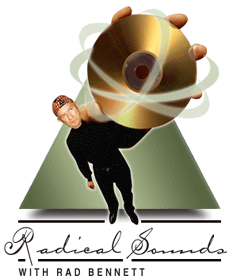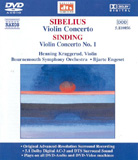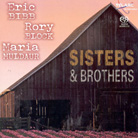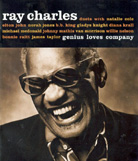 |
|||
| November 1, 2004 Living Stereo Lives Again
The public has not heard those three-channel masters in three channels until now. The multichannel capabilities of the advanced-resolution SACD system have made it possible to transfer these tapes as originally heard by the engineers who created them. In almost all cases, these master-tape facsimiles are far superior to the two-track mixdowns we’ve become used to. In general, the center channel anchors the soundstage and makes the positions of instrumentalists more precise. It also frees up the left and right channels so that there is often astonishing overall detail. The use of three channels also allowed the engineers to create a better sense of stage depth.
There is an obvious benefit to having a third channel available when recording, say, a concerto. The soloist can be spotlit and positioned in a way that two channels cannot achieve with a "phantom" center channel. The Jascha Heifetz recording of Mendelssohn’s Violin Concerto shows the use of three channels at its best. In the last movement, the solo clarinet plays in counterpoint to the soloist. Heifetz is heard clearly in the center channel; the left and right catch the clarinet, placing it clearly behind the soloist and in the orchestra. The clarity of this passage is amazing -- I have never heard it so before, except in live performance. The use of three channels makes the famous Charles Munch recording of the Saint-Saëns "Organ Symphony" the recording to have. Not only is everything much clearer than in the two-channel, but the frequency range, not having to be trimmed to suit a vinyl LP, exhibits solid bass that has never been fully heard before. Fritz Reiner’s recording of Mussorgsky’ Pictures at an Exhibition benefits in like manner. In recording a solo instrumentalist alone, the center channel can add to the feeling of presence, eradicating the line between performer and listener. This happens in Artur Rubinstein’s recording of the Chopin Ballades and Scherzos. This, one of the best solo piano recordings I have ever heard, is as close to having the great Polish pianist in my listening room as I hope to experience. If you only buy one SACD disc this year, make it this one. While some of these Living Stereo reissues were originally recorded in two channels, as indicated in the accompanying list, even these sound better than the previously issued CDs in having better definition and more air around the instruments. Pierre Monteux’s recording of Tchaikovsky’s Symphony No.6 is a particular amazement to me. I owned a monaural copy of this dynamic yet refined performance in the mid-1950s, then upgraded to a stereo version in the late ’50s, and am still reveling in those precise woodwind runs and realistic cymbal clashes 50 years later. Talk about a recording for all time! All of these Living Stereo reissues are SACD/CD hybrids; if you don’t yet have an SACD player, you can play their two-channel CD layers until you do. The notes are often from the original 1950s release, and the original cover art has been used, including the original Living Stereo banner logo. All of the performances are four-star affairs; in some cases (Reiner’s Bartók and Strauss), they are definitive. More Living Stereo SACDs will be released in early 2005. When I mentioned to RCA that I’d love to hear the Nilsson-Bjoerling-Leinsdorf recording of Puccini’s Turandot in three-channel SACD, I was told my suggestion would be passed along. In the meantime, don’t miss these excellent recordings now. Here are three outstanding new releases that I heard this month:
Over time, Sibelius’s Violin Concerto has become one of the composer’s most popular works. Its lyrical melodies fall easily on the ear, and it offers a soloist many opportunities to show off technical acumen. The Serenade, one of two he wrote for violin and orchestra, is a later work, somber even when trying to be cheerful. Christian Sinding remains known to all budding young piano students as the composer of The Rustle of Spring. He was trained at the Leipzig Conservatory and became a prolific composer. The violin concerto on this disc, the first of three Sinding wrote, is a thoroughly Germanic work, showing more influence of Sinding’s training than of his Norwegian roots. Young violinist Henning Kraggerud does well with all four compositions. His technique is assured, and he has a seemingly innate sense of lyricism. Even difficult passages sing, rather than sounding like work. The English orchestra responds splendidly to the guidance of Norwegian conductor Bjarte Engeset, yet another prize student of ultimate conducting pedagogue Jorma Panula. For this recording, Kraggerud was allowed to play the famous Guarneri del Gesù "Ole Bull" violin, and what a sweet and miraculous sound it has, especially when caught in such luminous high-resolution sound. The soloist is anchored firmly in the center channel, with the orchestra arrayed behind him. The surrounds give just the right sense of space to this exceptionally natural-sounding recording, which has also been issued as a hybrid multichannel SACD.
Blues singers Eric Bibb, Rory Block, and Maria Muldaur unite roots and talents to present one of the most agreeable blues albums to come around in a long time. They are backed and supported by Chris Burns on piano and Wurlitzer, Michael "Mudcat" Ward on upright bass, and Per Hanson on drums. The mood here is laid-back, lazy, and intimate, moved along by a rhythmic undercurrent that provides just the right beat. Standouts for me are Bibb’s worldly reminder "You Gotta Serve Somebody" and Muldaur’s "Bessie’s Advice," a lesson to all women to get themselves a man who will treat them right. The sound is just right. This 24-bit PCM digital recording sounds like the best direct-to-disc analog vinyl ever made, minus the groove noise. The voices and instruments glow. The singers are anchored in the center channel, the instruments on stage slightly behind. The backing vocals alternate between the front channels and the surrounds, and always seem appropriate. The surrounds also provide a good sense of intimate space, and the bass is solid and perfectly focused without ever becoming overbearing. The two-channel mixes are good for those who need them, but if you can play the definitive multichannel tracks, you’ll want to stick with them.
This, the last album made by the late, great Ray Charles, is both a fitting tribute to his genius and a very entertaining program. The performances by Charles and his legendary duet partners (Norah Jones, Diana Krall, Elton John, James Taylor, Bonnie Raitt, Johnny Mathis, Willie Nelson, B.B. King) are full of musical and dramatic insight. Every upfront performer here has a wealth of life experience, so one hears the lyrics to such familiar songs as "Do I Ever Cross Your Mind," "Over the Rainbow, " and "Sorry Seems to Be the Hardest Word" as if realizing their full meanings for the first time. "It Was a Very Good Year" is particularly poignant, standing on its own with incredible poignancy, but also serving as tribute to a missing legend, Frank Sinatra. Though the sessions ranged over a period of two years, the engineering is consistently first-rate throughout. In the multichannel mix, the vocals are anchored in the center channel with just enough spill to left and right that they do not seem isolated. The instruments wrap around a full 360 degrees, which disconcerts at only a few points along the way. This satisfying set is both comfortable and exciting in the same instant. One might wonder, though, why Concord packaged it in the medium-sized jewel box usually reserved for DVD-Audio discs. I have to file it with those, as it’s too tall for my shelf of SACDs. There is a CD-ROM video bonus if your player can access it (mine could not): some never-before-seen footage of Charles from a 1985 photo session. ...Rad Bennett
Ultra Audio is part of the SoundStage! Network. |
 In an eagerly awaited release,
RCA has issued ten famous recordings from its legendary Living Stereo series on hybrid
multichannel and two-channel SACDs. RCA began experimenting with stereo in 1953, when
binaural recordings were made of some Leopold Stokowski sessions. In 1954, RCA engineers
recorded Charles Munch in two-track stereo as he conducted Berlioz’s The Damnation
of Faust. Shortly thereafter, stereo recordings were made of the Chicago Symphony,
after which two- and three-channel (left, center, right) recordings became the norm. These
were first released on ¼", 7.5ips tapes in the Stereo Orthophonic series. In 1958,
the stereo LP became a reality and RCA, thanks to the foresight of its engineers, already
had a backlog of two- and three-channel master tapes of the greatest performers of the
era. These were quickly released on two-channel LPs.
In an eagerly awaited release,
RCA has issued ten famous recordings from its legendary Living Stereo series on hybrid
multichannel and two-channel SACDs. RCA began experimenting with stereo in 1953, when
binaural recordings were made of some Leopold Stokowski sessions. In 1954, RCA engineers
recorded Charles Munch in two-track stereo as he conducted Berlioz’s The Damnation
of Faust. Shortly thereafter, stereo recordings were made of the Chicago Symphony,
after which two- and three-channel (left, center, right) recordings became the norm. These
were first released on ¼", 7.5ips tapes in the Stereo Orthophonic series. In 1958,
the stereo LP became a reality and RCA, thanks to the foresight of its engineers, already
had a backlog of two- and three-channel master tapes of the greatest performers of the
era. These were quickly released on two-channel LPs. Sibelius: Violin Concerto; Serenade
in G Minor
Sibelius: Violin Concerto; Serenade
in G Minor Eric Bibb, Rory
Block, Maria Muldaur: Sisters & Brothers
Eric Bibb, Rory
Block, Maria Muldaur: Sisters & Brothers Ray
Charles: Genius Loves Company
Ray
Charles: Genius Loves Company